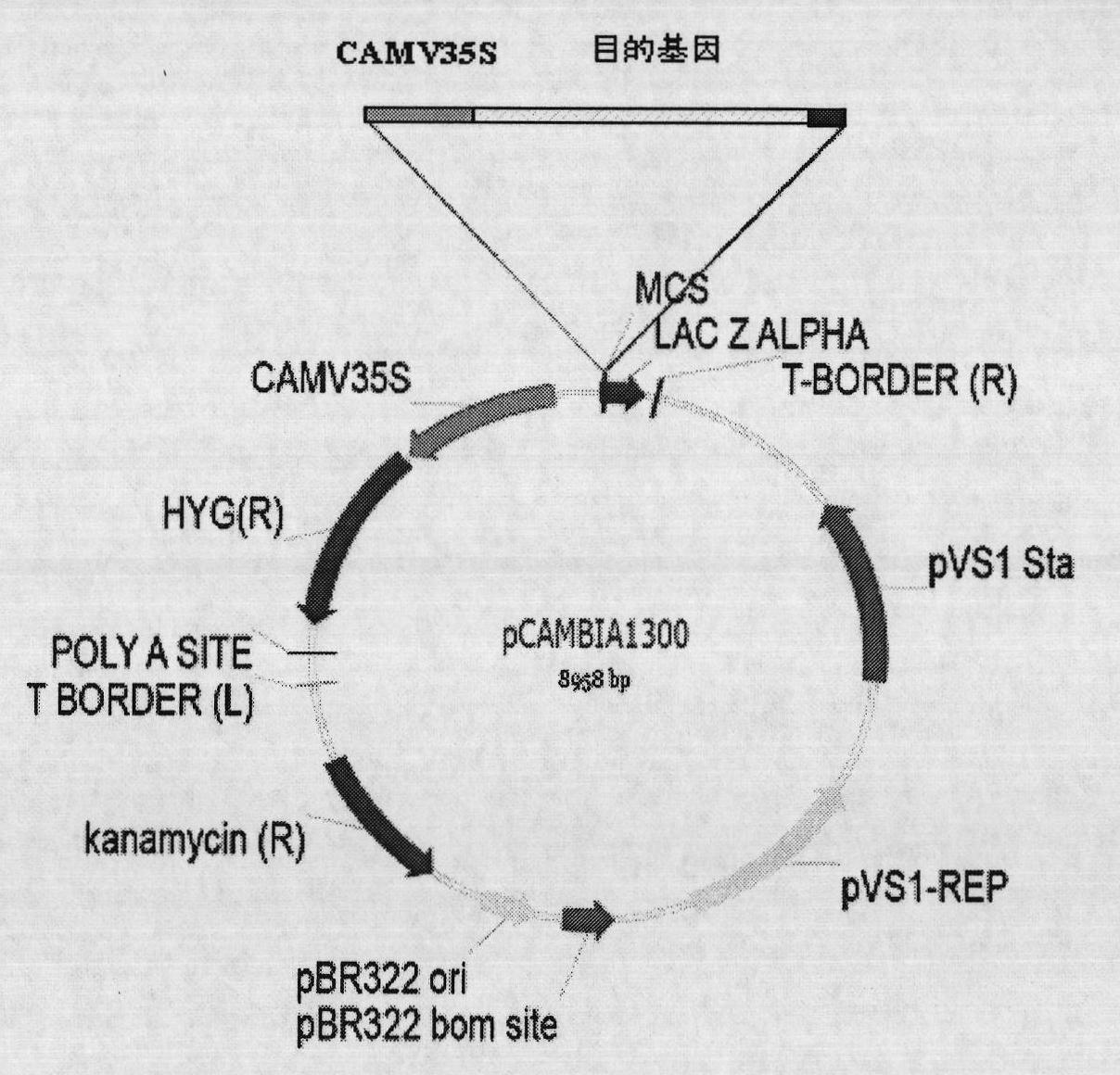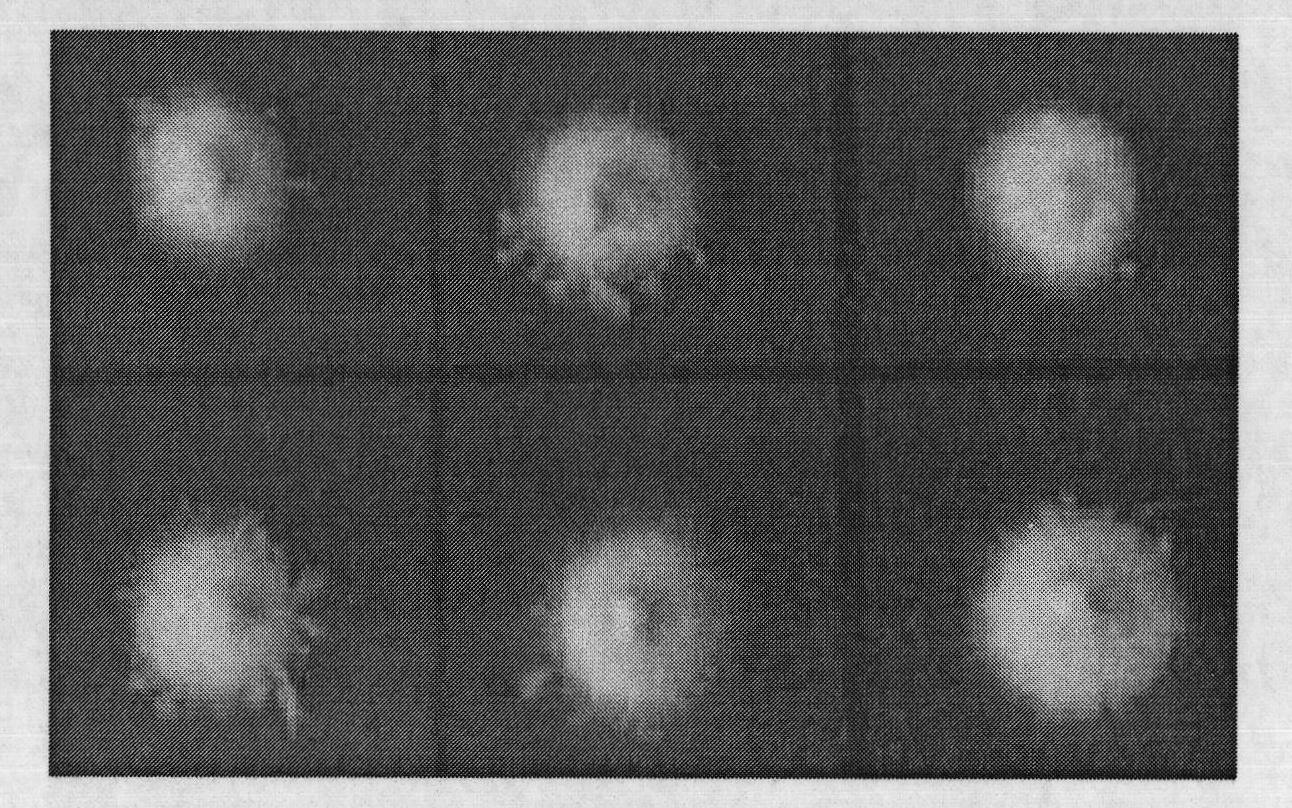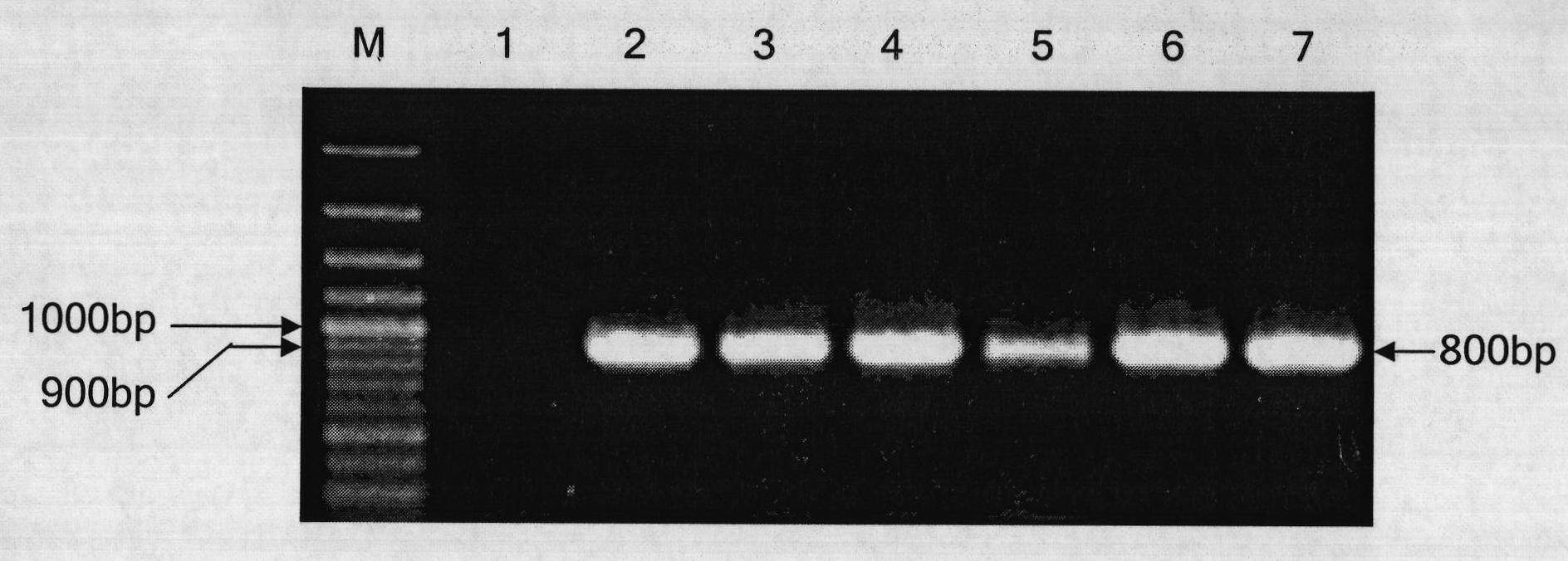Method for expressing and identifying foreign genes in fungus
An exogenous gene and gene technology, applied in genetic engineering, plant genetic improvement, botanical equipment and methods, etc., to achieve the effect of simple technical operation and short cycle
- Summary
- Abstract
- Description
- Claims
- Application Information
AI Technical Summary
Problems solved by technology
Method used
Image
Examples
Embodiment 1
[0053] Example 1 Expression and functional identification of new glyphosate-resistant genes from prokaryotes
[0054] The plant expression vector pCAMBIA1300 used in the present invention comes from Cambia Research Institute of Australia, and the CAMV35S promoter carried on it is a strong promoter from cauliflower virus, which has been widely used in plant transgenic breeding.
[0055] The present invention obtains a novel highly glyphosate-resistant EPSP synthase (5-enol type pyruvyl shikimate-3-phosphate synthase) gene from prokaryotes, and its open reading frame nucleotide sequence has a full length of 1335 bases, encoding a total length of 445 amino acids. The expression and function of the gene in eukaryotes can be rapidly identified by using the method provided by the invention. The operation steps are as follows:
[0056] 1. Construction of plant expression vectors
[0057] 1.1 Using the plasmid containing the above-mentioned highly glyphosate-resistant EPSP synthase...
Embodiment 2
[0102] Example 2 Expression and functional identification of new salt-resistance-related genes from prokaryotes
[0103] The invention obtains a global regulatory gene IrrE from the extreme corrosion-resistant Deinococcus, which can improve the salt-tolerant ability of Escherichia coli. The expression and function of the gene in eukaryotes can be rapidly identified by using the method provided by the invention. The operation steps are as follows:
[0104] 1. Construction of plant expression vectors
[0105] 1.1 Use the genomic DNA of D.radiodurans R1 as a template to amplify the open reading frame of the IrrE gene by PCR. The 5' end primer used is complementary to the 3' end of the CAMV35S promoter by adding 25 bases, and the 3' end primer is introduced into HindIII restriction site;
[0106] 1.2 Design primers to amplify the CAMV35S promoter, the 5' end primer introduces the BamHI restriction site, and the 3' end primer adds 25 bases to complement the 5' end of the EPSP sy...
PUM
 Login to View More
Login to View More Abstract
Description
Claims
Application Information
 Login to View More
Login to View More - R&D
- Intellectual Property
- Life Sciences
- Materials
- Tech Scout
- Unparalleled Data Quality
- Higher Quality Content
- 60% Fewer Hallucinations
Browse by: Latest US Patents, China's latest patents, Technical Efficacy Thesaurus, Application Domain, Technology Topic, Popular Technical Reports.
© 2025 PatSnap. All rights reserved.Legal|Privacy policy|Modern Slavery Act Transparency Statement|Sitemap|About US| Contact US: help@patsnap.com



